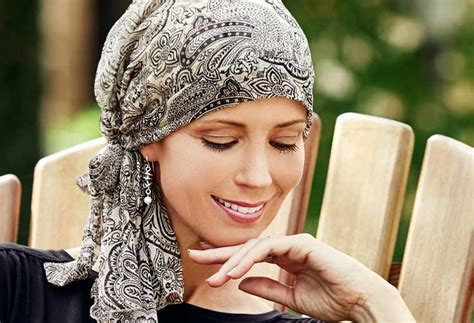Introduction

Cancer treatment can lead to hair loss, creating emotional and physical challenges for patients. Headcovers provide a comfortable and practical solution, restoring confidence and enhancing overall well-being.
Types of Headcovers
- Beanies: Stretchy and snug, available in various materials such as cotton, bamboo, and silk.
- Turbans: Elegant and stylish, offering coverage and volume.
- Scarves: Versatile and customizable, can be worn in multiple ways for different looks.
- Wigs: Available in synthetic or human hair, providing natural-looking hair replacement.
Materials for Headcovers
- Cotton: Breathable, absorbent, and comfortable for everyday wear.
- Bamboo: Silky-soft, hypoallergenic, and moisture-wicking.
- Silk: Luxurious, hypoallergenic, and temperature-regulating.
- Synthetic fibers: Affordable, durable, and easy to care for.
Comfort Considerations
- Fit: Choose a headcover that snugly fits your head without feeling too tight.
- Breathability: Opt for breathable materials like bamboo or cotton to prevent sweating.
- Softness: Select fabrics that are gentle on your scalp, especially if you have undergone radiation therapy.
- Pressure distribution: Look for headcovers with soft seams and elastic bands that distribute pressure evenly.
Styling Ideas
- Embellishments: Add a personal touch with beads, ribbons, or bows.
- Headscarf styles: Experiment with different tying techniques to create various looks, from chic to bohemian.
- Wig styling: Consult with a hairstylist to explore different wig styles and maintenance techniques.
Psychological Benefits
- Confidence boost: Headcovers restore a sense of normalcy and improve self-esteem.
- Emotional expression: Through colorful or patterned headcovers, patients can express their individuality and creativity.
- Privacy and dignity: Headcovers provide privacy during treatment and reduce the impact of hair loss on social interactions.
According to the American Cancer Society:
- 65% of women undergoing chemotherapy experience complete hair loss.
- Over 80% of cancer patients report headcovers as an essential part of their treatment journey.
Headcovers for Specialized Needs
- Chemotherapy-induced alopecia: Breathable, soft, and moisture-wicking materials like bamboo or cotton are recommended.
- Radiation-induced alopecia: Headcovers with extra scalp coverage and pressure distribution are beneficial.
- Alopecia areata: Scarves or headbands that offer partial coverage and are easy to tie are suitable.
Tips for Choosing the Right Headcover
- Consider your lifestyle and personal style.
- Ask your healthcare provider for recommendations based on your treatment plan.
- Try on different styles before purchasing to ensure a comfortable and flattering fit.
- Explore online resources and support groups for inspiration and advice.
Effective Strategies for Headcover Use
- Be proactive: Start using headcovers as soon as hair loss begins to minimize emotional impact.
- Find what feels right: Experiment with different styles and materials to find headcovers that suit your needs and preferences.
- Consult with professionals: Seek guidance from healthcare providers and stylists to ensure comfort and confidence.
- Embrace your journey: Use headcovers as a tool for self-expression and empowerment.
Conclusion
Headcovers are an indispensable tool for cancer patients, providing comfort, confidence, and a sense of normalcy during treatment. By understanding the different types, materials, and styling options available, patients can make informed choices that enhance their well-being throughout their journey.
| Table 1: Types of Headcovers | Type | Description |
|---|---|---|
| Beanies | Stretchy, snug, and available in various materials | |
| Turbans | Elegant and stylish, offering coverage and volume | |
| Scarves | Versatile and customizable, can be worn in multiple ways | |
| Wigs | Available in synthetic or human hair, providing natural-looking hair replacement |
| Table 2: Materials for Headcovers | Material | Benefits |
|---|---|---|
| Cotton | Breathable, absorbent, and comfortable for everyday wear | |
| Bamboo | Silky-soft, hypoallergenic, and moisture-wicking | |
| Silk | Luxurious, hypoallergenic, and temperature-regulating | |
| Synthetic fibers | Affordable, durable, and easy to care for |
| Table 3: Comfort Considerations | Factor | Considerations |
|---|---|---|
| Fit | Snugly fits your head without feeling too tight | |
| Breathability | Choose breathable materials like bamboo or cotton to prevent sweating | |
| Softness | Select fabrics that are gentle on your scalp | |
| Pressure distribution | Look for headcovers with soft seams and elastic bands that distribute pressure evenly |
| Table 4: Headcovers for Specialized Needs | Condition | Recommended Headcover |
|---|---|---|
| Chemotherapy-induced alopecia | Breathable, soft, and moisture-wicking materials like bamboo or cotton | |
| Radiation-induced alopecia | Headcovers with extra scalp coverage and pressure distribution | |
| Alopecia areata | Scarves or headbands that offer partial coverage and are easy to tie |
